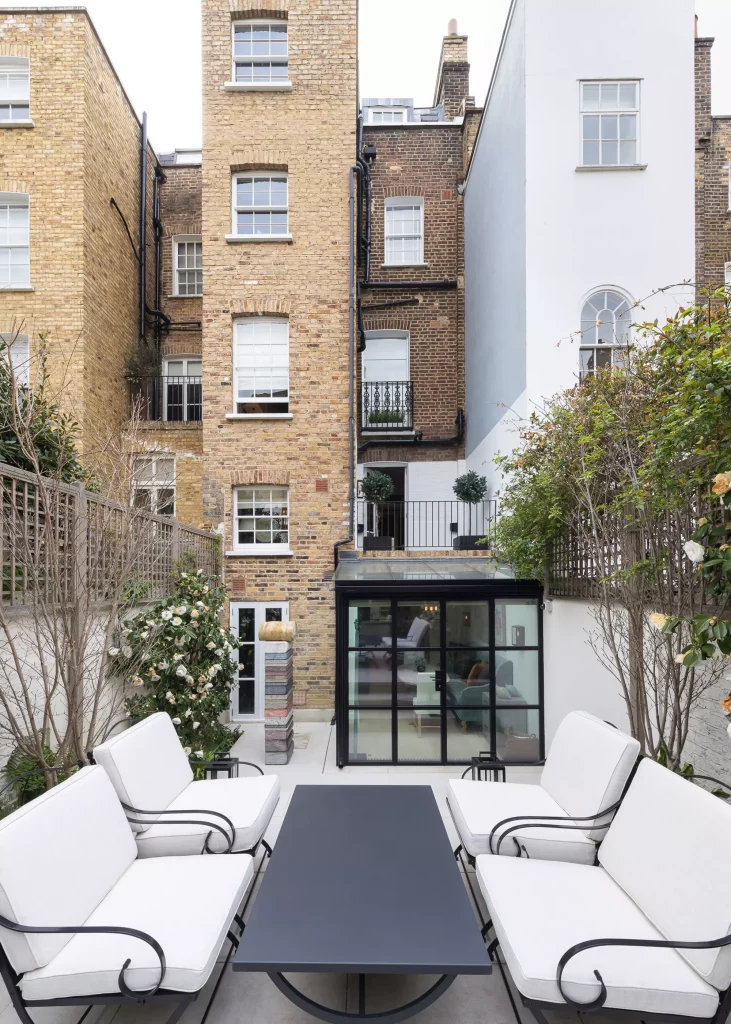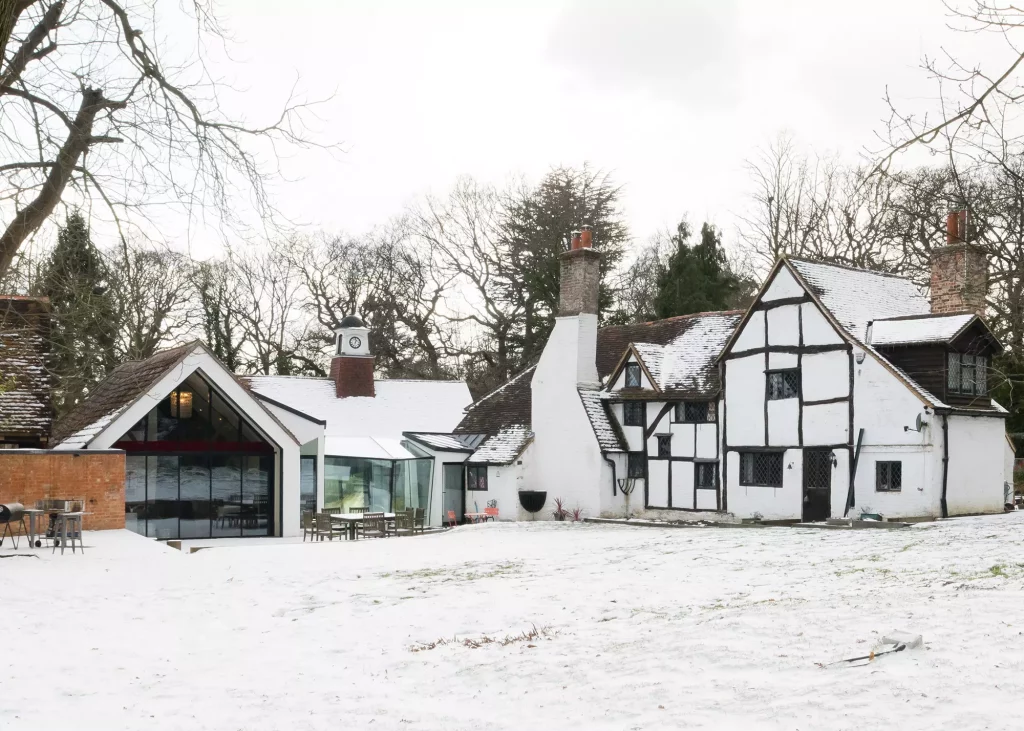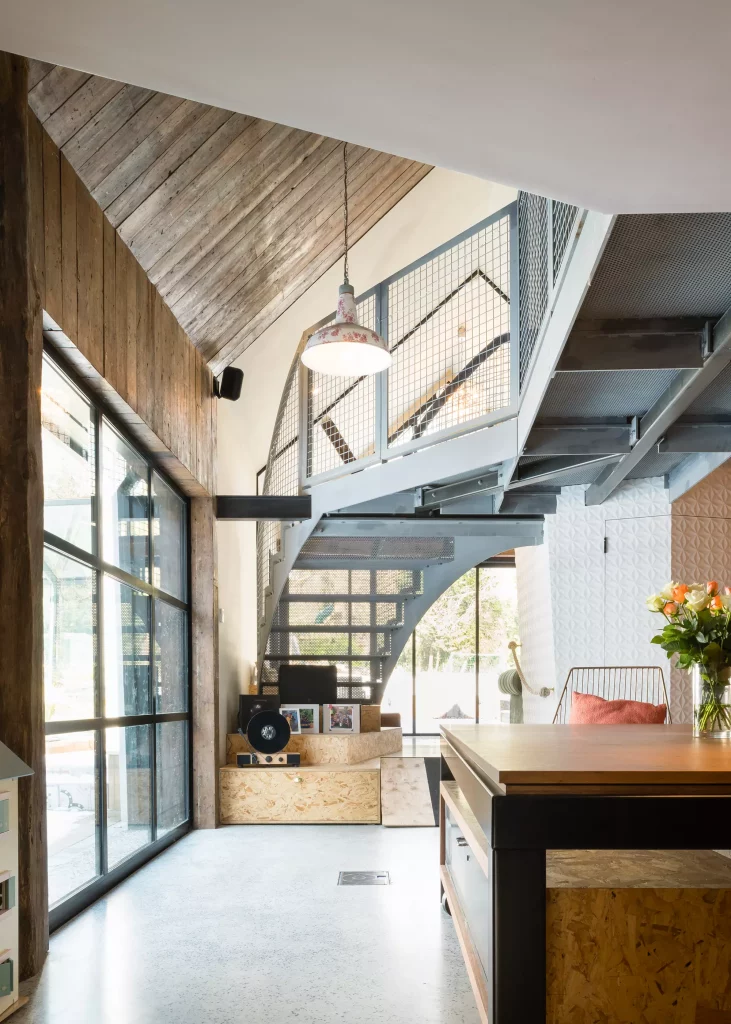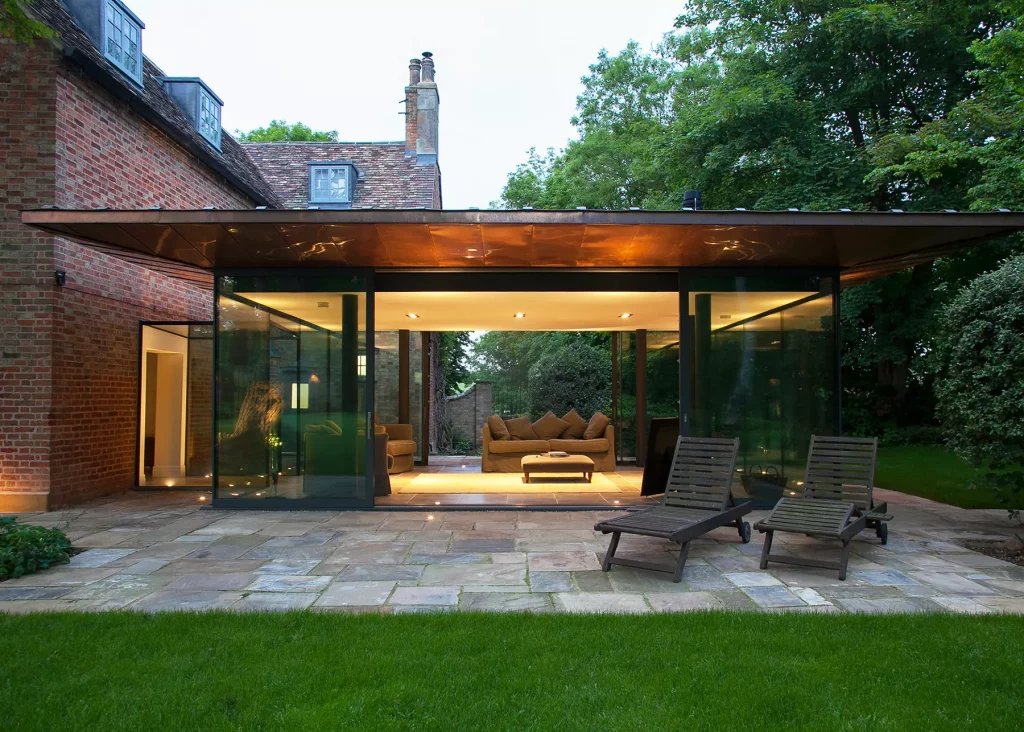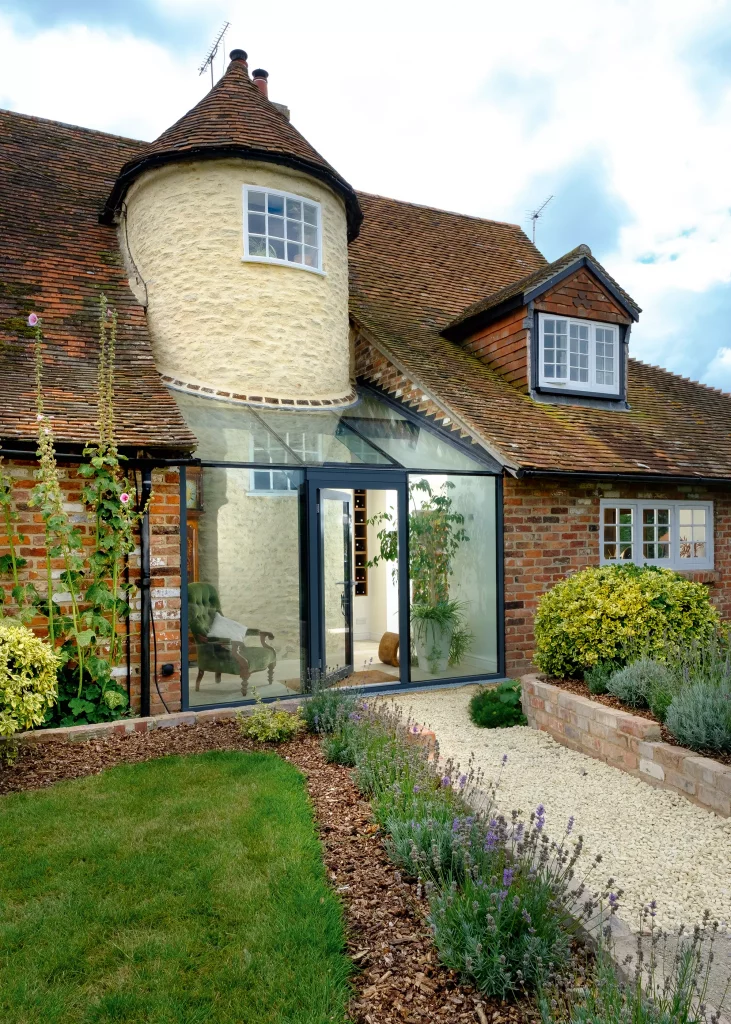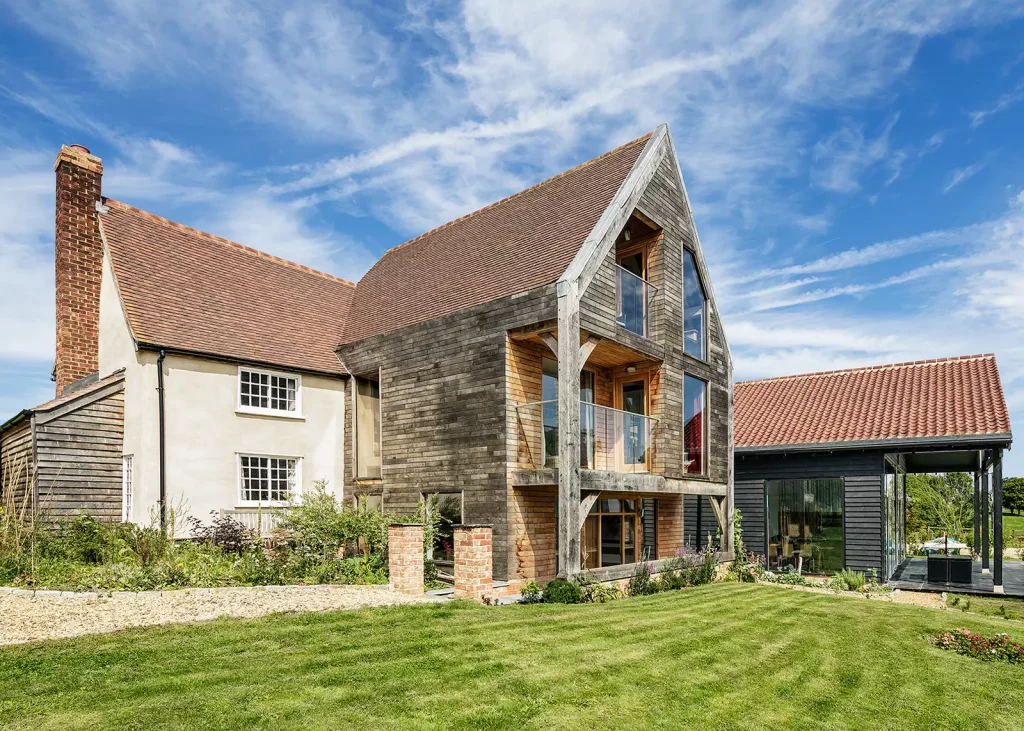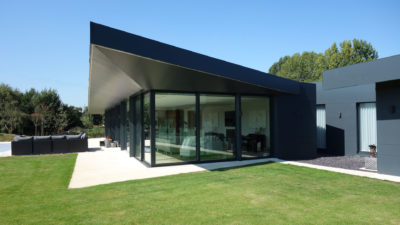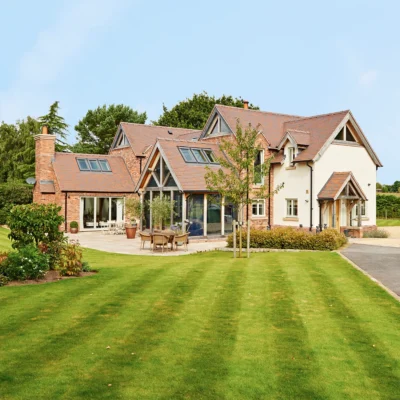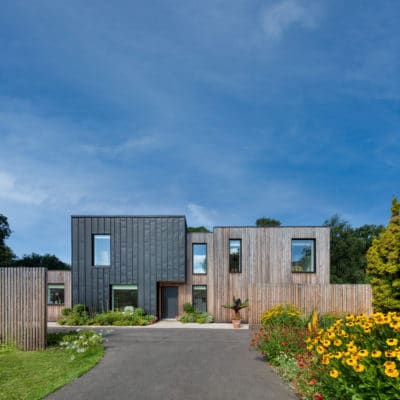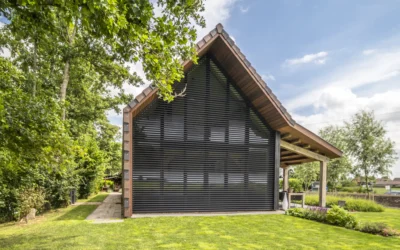Listed Home Extensions: 12 Characterful Designs
Extending a listed home will help bring an older property into the 21st century without losing the original charm that earned its title.
“A building is listed when it is of special architectural or historic interest in a national context. Most properties built before 1850, still in their original condition, are listed – whether simple terraces or stately homes,” says Dr Richard Morrice, senior planning and heritage reform advisor at Historic England.
With this understanding, anyone looking to extend a home of this kind will immediately raise any planning expert’s eyebrow. So, before drafting any plans for a listed home extension, you should always consult your local planning authority for clarification on the history and restrictions of your plot and surrounding area.
Creating a project that complements the neighbouring architecture while being sensitive to the property at hand can be tricky, especially for those wanting to transform an older home into something ultra-modern. Although, this can prove a worthy challenge as the combination of both modern and traditional designs can deliver striking outcomes.
Here we have put together a collection of impressive and characterful extensions to listed properties, alongside some top tips from our experts to help you make the most of this amazing design opportunity.
1. Ultra-Modern Listed Home Extension
The sweeping curved plywood roof on this extension to a grade II listed Georgian townhouse by Tonkin Liu is angled to follow the sun’s path throughout the day and forms a living area come studio for the architect owners.
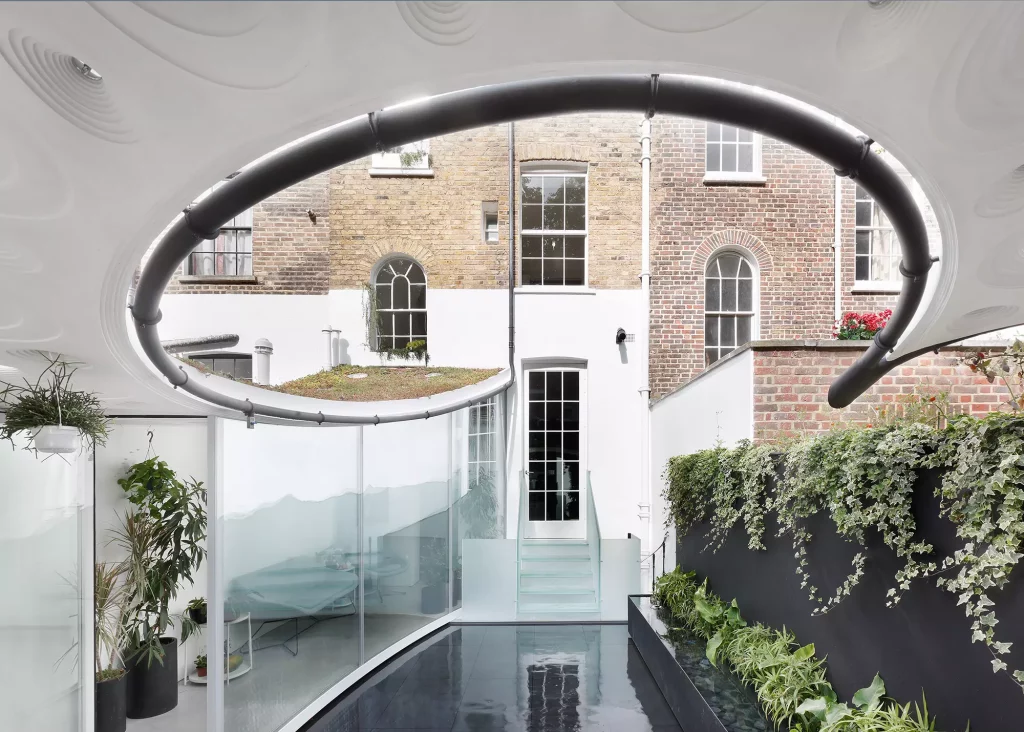
Photo: Alexander James
A green roof has been added to the top of the extension to blend into the garden and the outdoor space makes use of a rainwater harvesting tank that creates a shallow pool in place of the patio when desired.
2. Glass Box Extension to a Listed Home
This steel-framed glass box extension by IQ Glass slots onto the back of a grade II terraced property in Chelsea, London, expanding the narrow layout and drawing valuable light into the dark downstairs floorplan.
The clever design by Atelier West has been constructed with a glazed roof to give an illusion of additional space. It also makes use of black steel to provide the more traditional and charming elements of the home with a modern feel.
Read More: Design Ideas for Listed Buildings
EXPERT VIEW Applying for Listed Building ConsentNicole Guler from Urbanist Architecture advises on how to obtain approval to extend a listed property. Nicole is a senior town planning expert and chartered member of the Royal Town Planning Institute. Obtaining approval to extend a listed property isn’t always easy; but it’s by no means impossible. The National Planning Policy Framework (NPPF) states urban renewal of listed buildings should be considered for appropriate and viable use. To maximise your chances of success, the local planning authority (LPA) needs to see that you understand the impact your proposal will have on the listed property and its surroundings. So, include the following in your listed buildings consent application:
You will always need to submit a Heritage Impact Statement, too. This should go into detail on the above points, explaining the property’s history, any significance, previous developments (perhaps there’s already an old extension or conservatory?) and proposed landscaping. In addition, provide details of key materials, which must be authentic and complement the original property. You may be asked for other documentation, too. The LPA will weigh up your application and evidence. With a careful and considerate design that recognises and enhances the property’s historical provenance, you have a good chance of gaining consent. |
3. Listed Parchment Factory Upgrade
Originally, the ruins of a 17th-century parchment factory in Northamptonshire were set to be demolished and the adjoining cattle shed converted to add more space to the owner’s listed Victorian home.
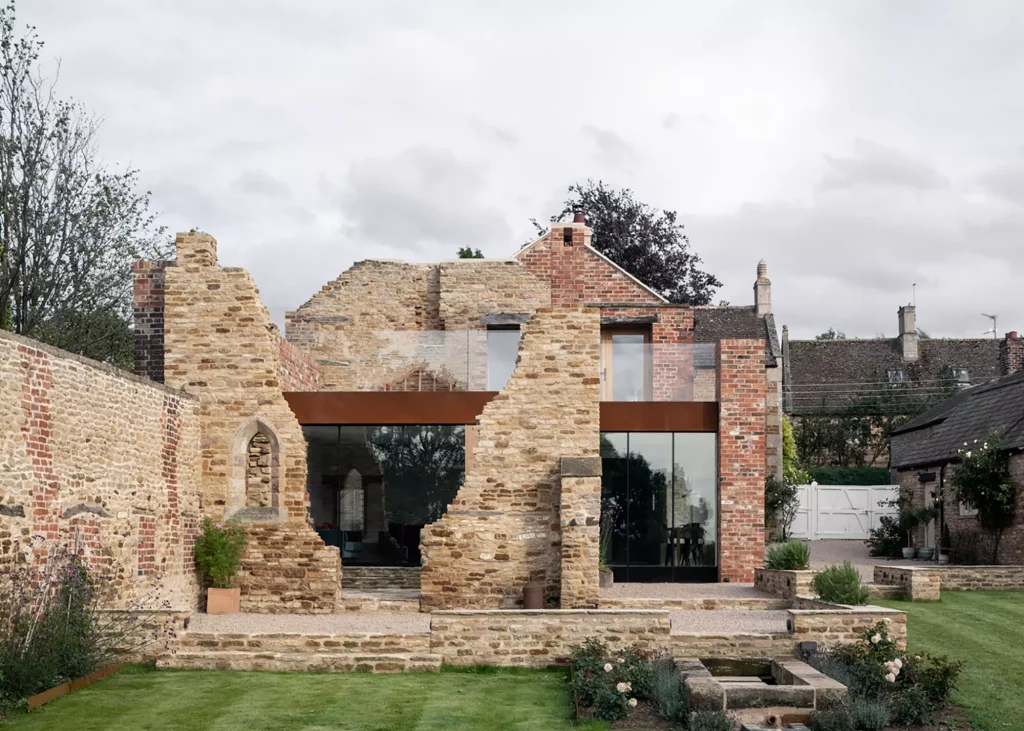
Photo: Johan Dehlin
However, with the help of Will Gamble Architects, a new extension has instead been built within the remains of the masonry walls. This design combines the historical significance of the property and has given the family a unique open-plan kitchen, living and dining area.
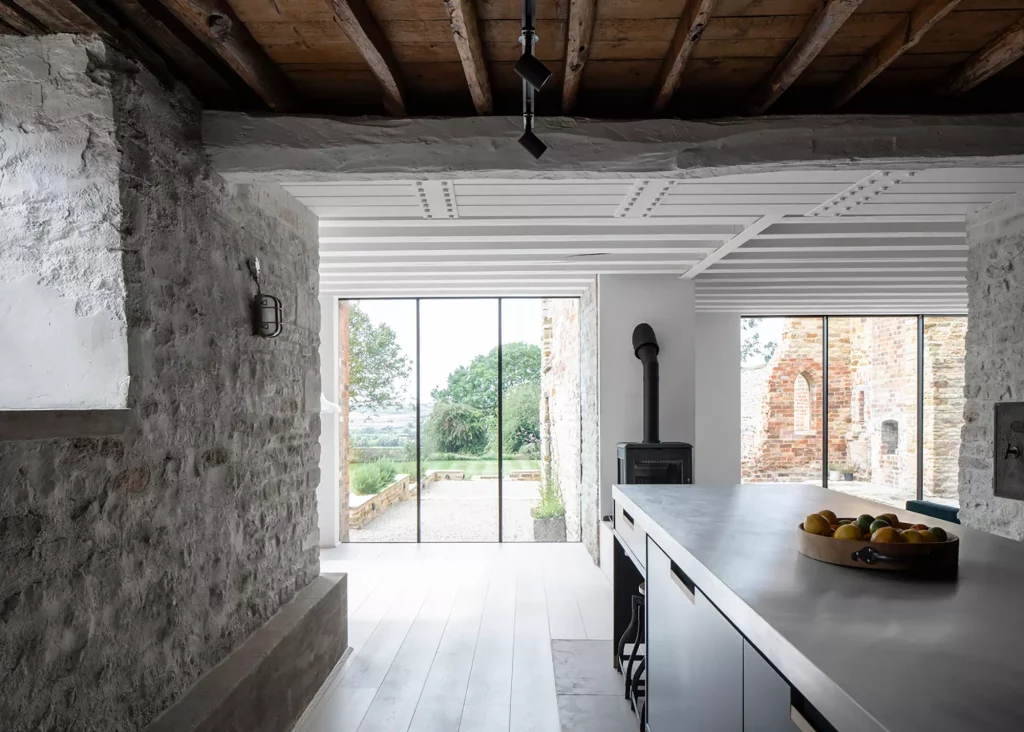
Photo: Johan Dehlin
4. Listed School Building Extension
ArkleBoyce Architects have created a spectacular extension as an addition to this grade II listed property that was rebuilt in 1852. The listed home is set within a rural Yorkshire hamlet, designated as both a conservation area and an area of outstanding natural beauty.
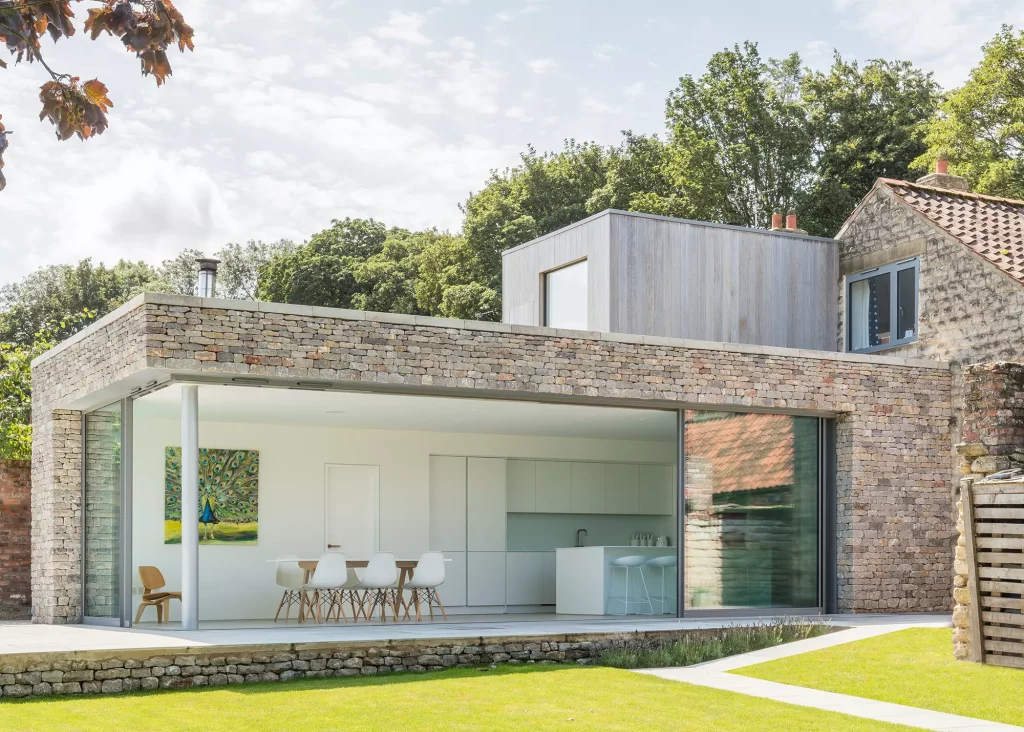
Photo: Nicholas Worley
Designing a property that would satisfy planning requirements and complement the existing property was a challenge for these ArkleBoyce.
However, the outcome was a striking success. The seamless extension has been completed in a combination of stone, wood and limestone facade which reference the agricultural vernacular whilst extensive glazing adds a contemporary feel.
Read More: How to Get Planning Permission in the Countryside
5. Seamless Extension to an Urban Home
The new two-and-a-half storey tower extension at the rear of this 1830s grade II listed home in Islington replaces a 1980s addition that had been poorly built.
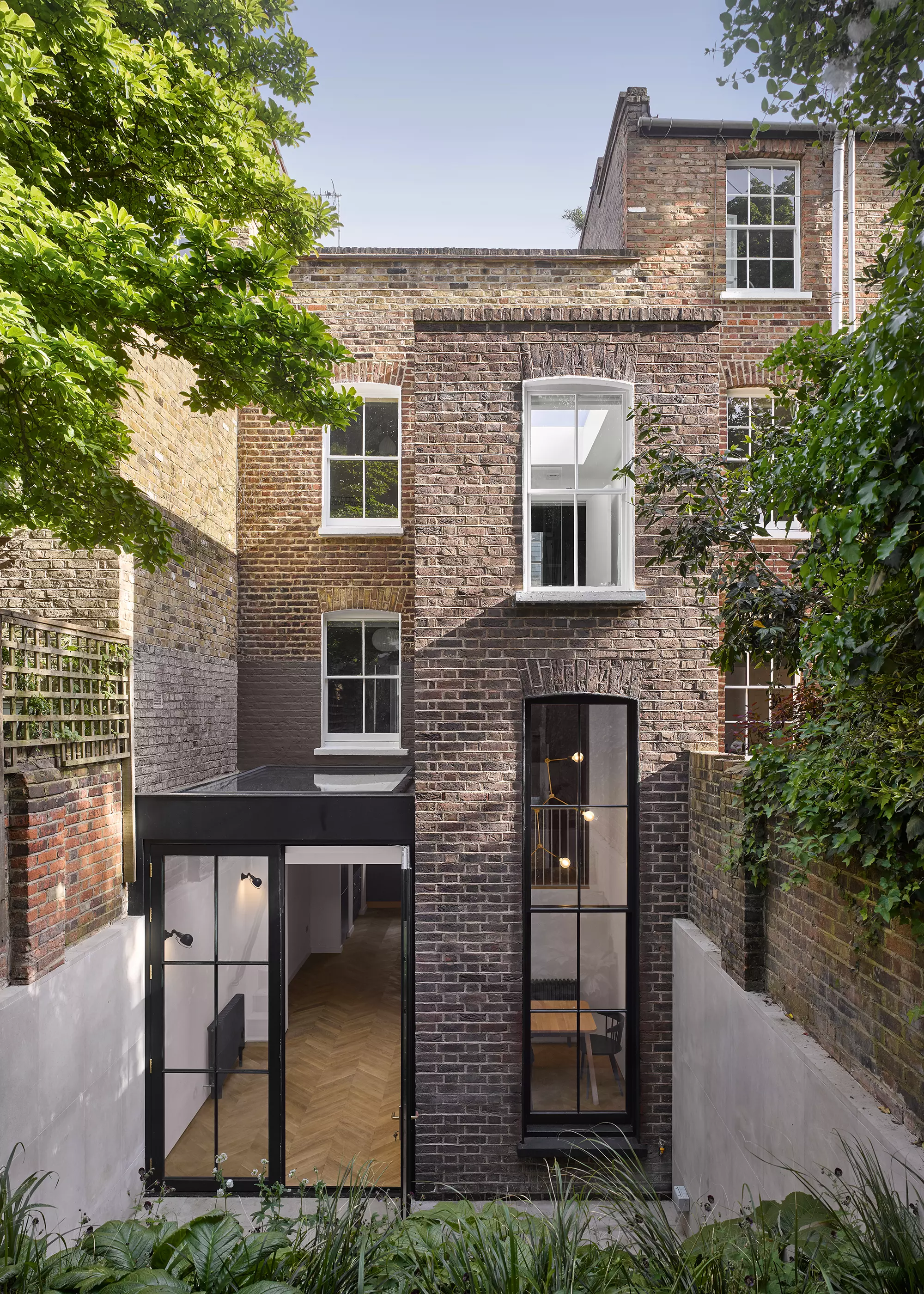
Photo: Will Pryce
Dominic McKenzie Architects have created a contemporary extension that unifies both old and new, brining a new lease of life to the back and interior of this listed home.
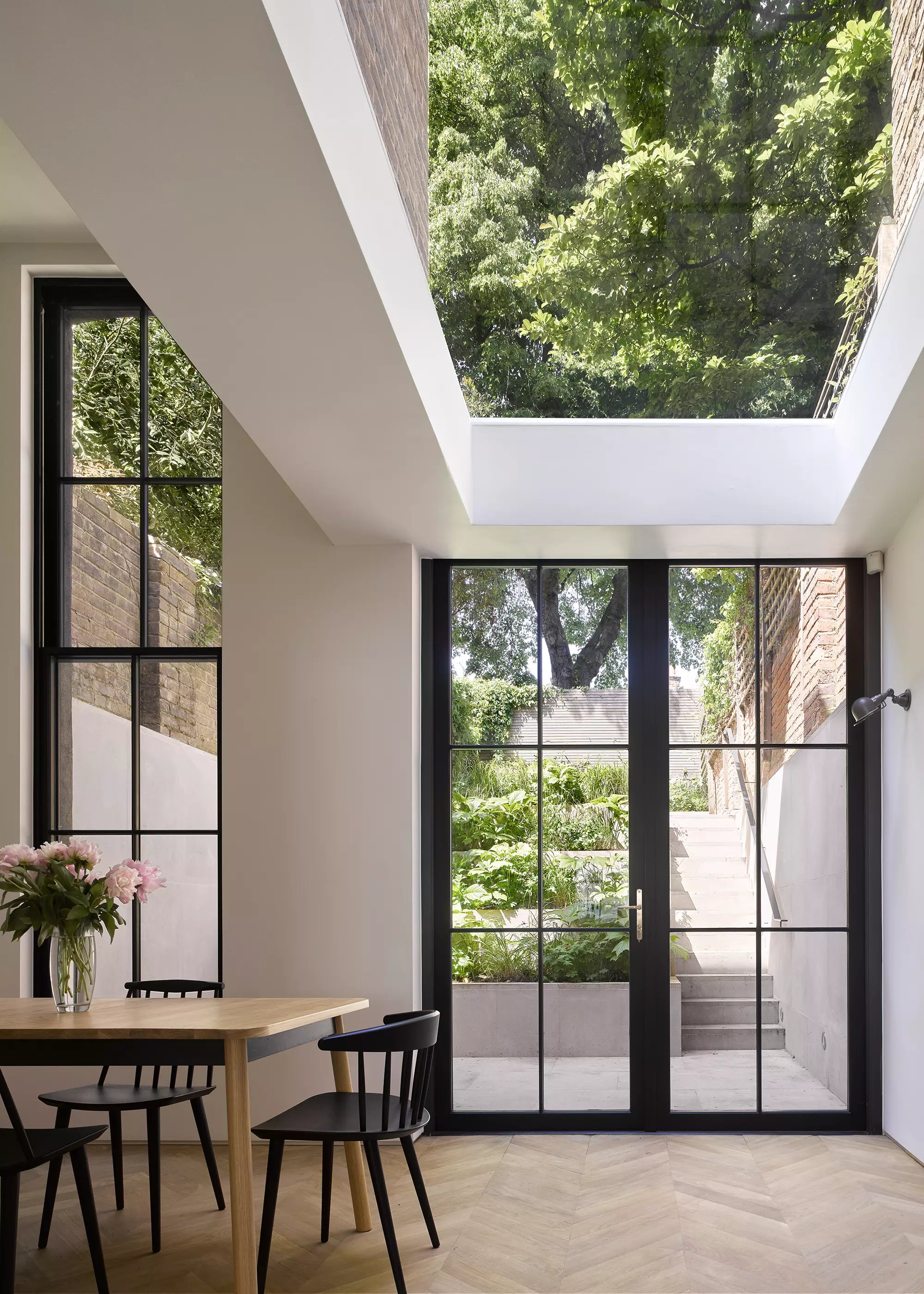
Photo: Will Pryce
The replacement’s upper section contains a new bathroom and, beneath is a partially vaulted ceiling over the dining room, alongside a single-storey level illuminated with a glazed roof.
A 3.5m high timber sash window echoes the original unit above and brings abundant light and character to the new dining room.
Read More: 12 Amazing Glazing Ideas for Your Home
EXPERT VIEW Designing a listed building extensionRobert Wilson, architectural director at Granit Architecture + Interiors, gives his advice on how to design an extension for your listed home: Does my extension design have to match the style of the existing house? Not necessarily. It’s important that the history of the building can be seen, showing the various changes and additions over time. A heritage architect understands how scale and materials can look in keeping within the context of a modern design. Can I build a double-storey addition? Sometimes. The key is the significance of the heritage asset and making sure the design of your extension isn’t detrimental to that. What materials might I be asked to use? If the goal is to design an extension that’s identifiably separate from the original house, then contrasting or contemporary materials are likely to be acceptable. Otherwise, you may need to research and use original methods and materials. Lime plaster is traditional, for instance, but just as appealing now. Old bricks can be different dimensions, so matching size but not colour could be a respectful way to blend with the old. What type of original architectural features might need protecting? The design approach should identify any important elements, such as chimneys, steeply pitched roofs, doors and windows. The building’s contribution to a wider setting as part of the street scene is crucial, too: perhaps it’s one of a collection of similar gable-ended houses, or within the locale of a more significant building that demands protection in your scheme. What design solutions can help? An extension should be in scale and proportion to the listed house, considering details like eaves lines and plinths, for example. Glazed links are a way of transitioning from the original to the new, as are fully glazed extensions – the transparency allows the original materials to show through. |
6. Glass Link Extension to Farm Cottage
An angular glass walkway links a series of renovated farm outbuildings to this 400-year-old listed home in Surrey, surrounded by woodlands.
Alter and Company Architects created a starkly contemporary design to emphasise the sense of travelling through time from the rural historic past to the modern present.
Inside the barns, original board cladding was removed and reinstated over insulation, with bold sculptural elements creating a pleasing juxtaposition between the old and new.
More Advice: How to get Planning Permission for an Extension
7. Islington Terrace Listed Home Extension
Extending this grade II listed terrace in Islington’s Barnsbury conservation area needed a light touch up approach to preserve the house’s appearance.
The brick build design by Hut Architecture is contextual and complementary to the property’s original materials, helping it to remain in keeping with the local architecture and satisfy planners.
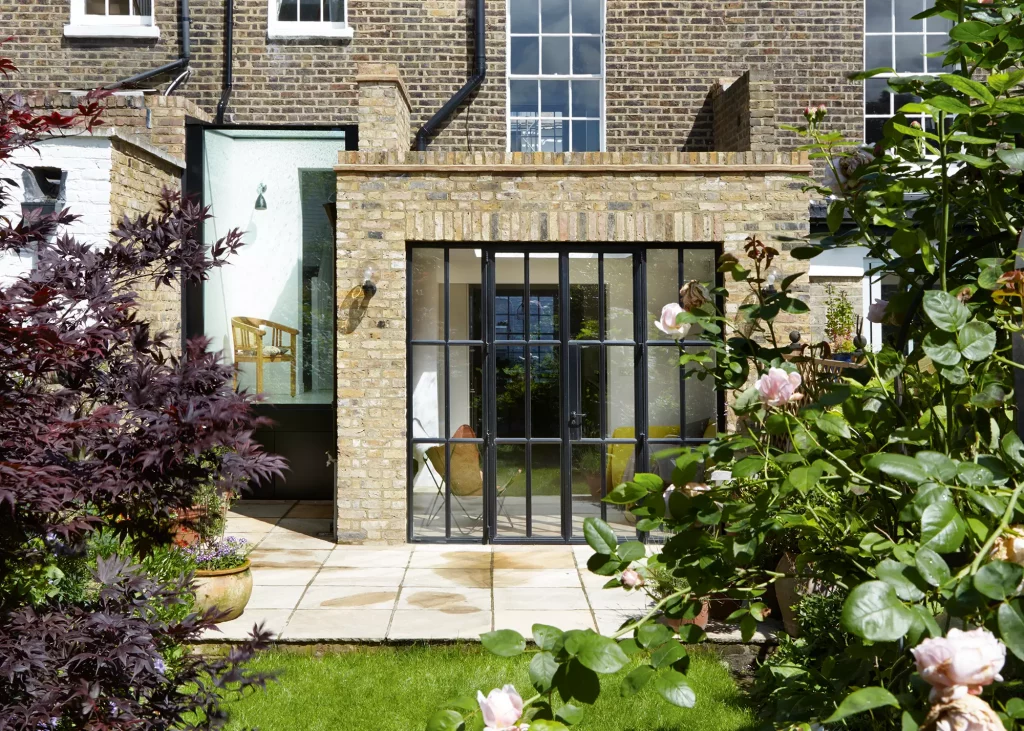
Photo: Heather Hobhouse
A contemporary feel is brought to the traditional property through the new large rooflight which supplies plentiful daylight to the lower ground floor.
8. Glazed Extension to Edinburgh Home
Archer + Braun have designed this sleek red sandstone and glass extension as an addition to a main grade B listed home in Edinburgh (the Scottish system goes from A to C).
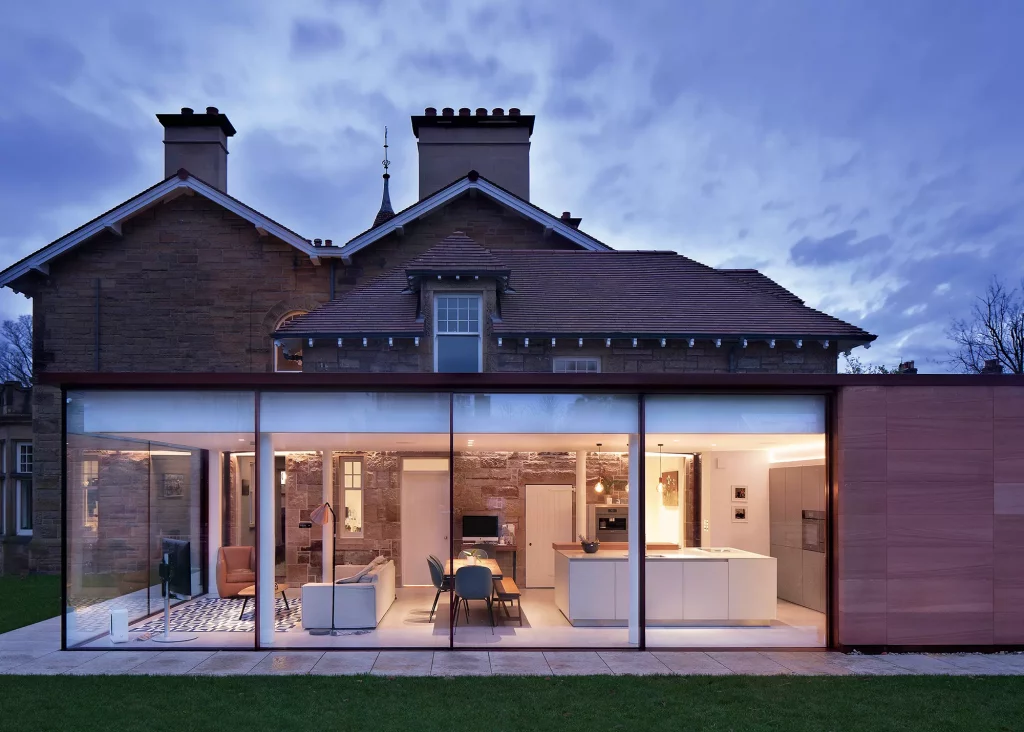
Photo: David Barbour
The sensitive project uses colours that complement the original stonework and roof tiles, which have helped to create an addition that harmonises with the original build yet still stands out as an addition to the property.
9. Family Room Extension to a Listed Home
Located within Cambridgeshire is Kimbrook House, a detached grade II listed dwelling. The clients were looking for a sympathetic design that enhances the existing setting whilst not detracting from the historical charm of the home.
The glass link allows visual separation while creating a flow between the listed building and extension. Two key materials used were dark copper cladding and minimal framed glass, as both materials blend whilst emphasising the style of the listed building.
10. Glass Porch Addition to Listed Home
This structural glazing IQ Glass by proved a clever design solution to extending this grade II listed home, Chestnut Cottage, in a historic village in Oxfordshire.
The red brick property features an unusual stair turret at the rear, so the owners sought a design that would preserve this historic feature while adding space and light.
The frameless glazed porch connects sympathetically and with minimal alterations to the limestone wall, allowing the historic details to remain on show.
11. Oak Frame Extension to Listed Farmhouse
Oakwrights were enlisted to design and construct a new extension to this 18th century Grade II listed farmhouse after it was knocked down and rebuilt due to structural dangers.
The striking addition to the home was designed using Oakwrights’ specialist 3D cad cam software, working to the dimension provided by full 3D laser scan of the back of the house.
The result is an impressive extension to the home, blending well with the existing property and successfully adding a new charming feel.
12. Contemporary Extension to Listed Barn
Jonathan and Zahra Chambers were after a home that would give them more privacy, a large outdoor area and a comfortable, family-friendly feeling for their 10-year-old daughter.
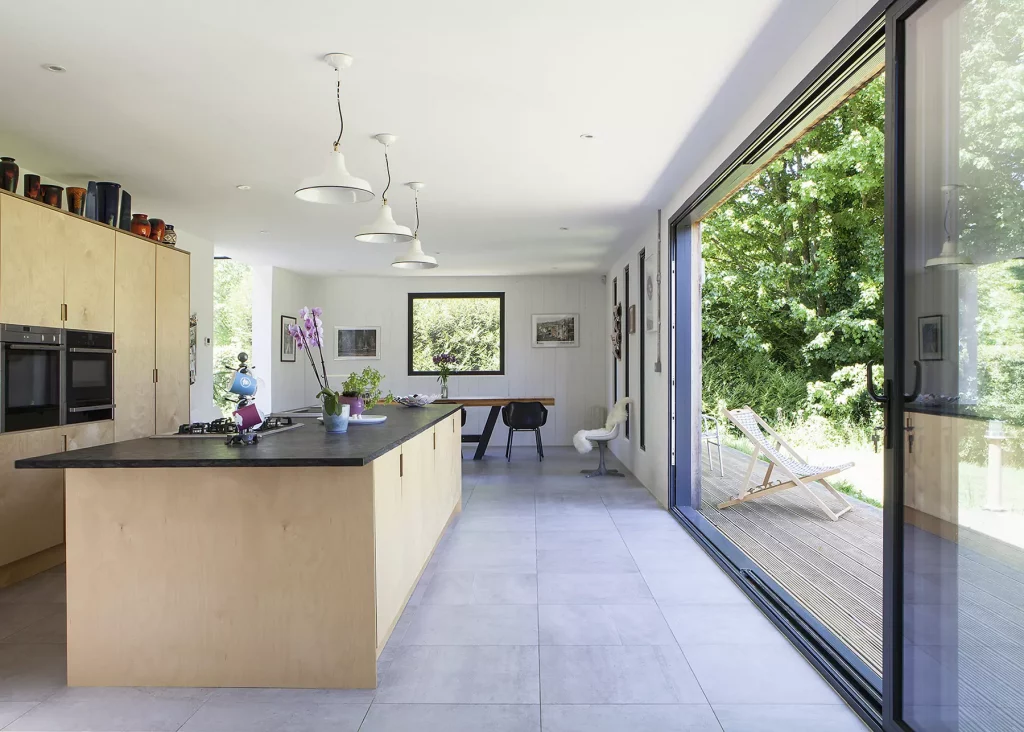
Photo: James French
The couple viewed a barn conversion in a village in Hampshire and they immediately fell in love with the thought of adding an extension. However, even before the couple purchased the site, the estate agents warned them that they would be unlikely to get planning consent to construct an addition.
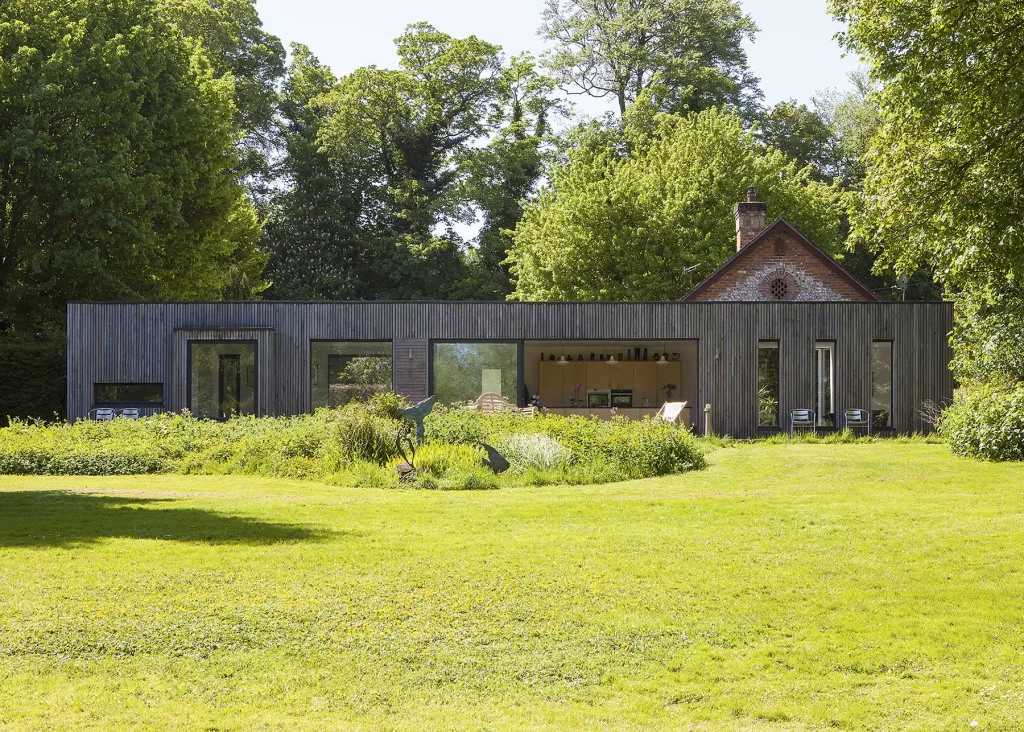
Photo: James French
The couple however were able to proceed with their plans, constructing an extension with English oak boards from Vastern Timber. The couple knew that the timber would weather to become a beautiful silver tone over time, helping the building to blend seamlessly into the woodland setting.
The structure houses an open-plan kitchen-diner, plus a casual seating area that’s delineated by a partial wall.
More Inspiration: House Extension Ideas: 30 of the Most Amazing UK Home Extensions
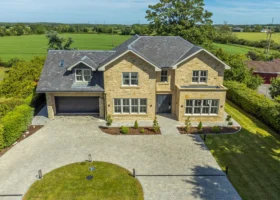
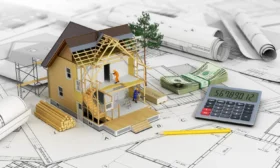
































































































 Login/register to save Article for later
Login/register to save Article for later

